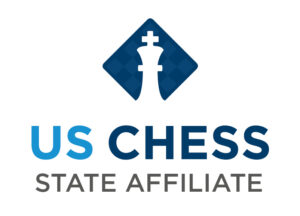Tanay Patri – Kyle Sharpe
Tennessee State Scholastic Team Finals, Tennessee Tech University, 28.03.2015
1.d4 d5 2.c4 e5 Again the Albin Counter! Black will win this game, but White’s simple strategy gives him the better game till several inaccuracies pop up. 3.dxe5 d4 4.Nf3 c5 5.e3 Nc6 6.exd4 cxd4 7.a3 Bg4 8.Bf4 Qa5+ A new idea and again, not a good one. Black, in order to successfully play this opening, has to quit worrying about his material and look for moves that hinder White’s development. e.g. 9.Nbd2 Nxe5 10.Bxe5 Bxf3 11.Qxf3 Qxe5+ 12.Qe4 White estimates that he can win easily as the game gets to the ending, but there is no reason to get lazy at this point. Black’s position is very bad… and exposed King, weak pawns, and a lack of development means that even an endgame will be hard to hold. Better to keep pieces on the board. e.g. [12.Be2 Bd6 (12…Be7 13.0–0 Nf6 14.Rfe1) 13.Qxb7 Rb8 14.Qc6+ Black is lost.] 12…Qxe4+ 13.Nxe4 f5 14.Ng3 A terribly passive move. Sometimes, when we are very satisfied with our position from the opening, we tend to play as if, no matter what happens he will retain the advantage. That is not the case. Aggression will keep Black in his place. e.g. [14.Ng5 Be7 15.Ne6 Kf7 16.Nxd4 g6 17.0–0–0 White is much better.] 14…g6 15.Bd3 Nf6 16.0–0 Bg7 Black has to be relieved. Development is about finished and the d-pawn is pretty secure. Opposite colored Bishops help take some worry out the ending. 17.Rae1+ Kf7 18.Re2 Again, playing some general principles rather than taking the time to come up with active ideas. Better is c4–c5 in order to get the queenside majority moving and activate the d3 Bishop. 18…Nd7 Excellent. Black now begins to activate his pieces. 19.b4 Ne5 20.Rd1 Nxd3 21.Rxd3 Rhe8 22.f3 Re3 Strategically, this is a bad move. White has gotten his Rooks tangled up and this helps him free them. Better to attack the queenside while White is inactive. For Example: [22…a5 23.Kf2 axb4 24.axb4 Ra4 25.Rb3 Rd8 26.Rd2 Bh6 27.Rd1 (27.Rdd3? Be3+ 28.Ke2 Ra2+ Black is winning.) 27…Ra2+ 28.Kf1 Rc2 29.c5 Ra8 And Black overruns the board, planning …R8a2.] 23.Red2 This is terrible. White can untangle immediately if he exchanges, getting about an equal position. [23.Rexe3 dxe3 24.Rd7+ And White should find enough play to about equalize.] 23…Rae8 Too many general principles and not enough calculation. The weakness of Whites position is his potential passed c-pawn. Black can go after it immediately. [23…Rxd3 24.Rxd3 b6 (fixing the c-pawn) 25.Ne2 Rc8 26.Kf2 (26.Nxd4 Rd8 wins the knight) 26…Rxc4 Black is a pawn ahead with the better position.] 24.Kf2 Rxd3 25.Rxd3 Bh6 26.Nf1 Ra8? A serious oversight dropping the d-pawn. 27.Nd2? [27.Rxd4 Re8 28.Rd7+ Kg8 29.Rxb7 White wins.] 27…Ke6 Again, just dropping the d-pawn. Correct was simply …Be3 and Black is much better. [27…Be3+ 28.Ke2 Re8 29.h3 Kf6 30.a4 Ke5 31.Rb3 Rc8 32.Nf1 Rxc4 33.Nxe3 dxe3 34.Kxe3 Black has the much better game, though a lot of work left.] 28.g3 [28.Rxd4 Simply wins the pawn for nothing.] 28…Be3+ 29.Kg2 The King does not belong tucked in a corner in the ending. 29…Bxd2 Well, this is equal. 30.Rxd2 Ke5 31.Re2+ Kd6 32.f4 A serious error that costs the game right away. [32.Kf2 a5 (32…Rc8 33.c5+ Kd5 34.Re7 With plenty of counterplay.) 33.Rd2 Maintains the balance because the d-pawn is weak. 33…axb4 34.axb4 Ke5 35.Re2+ Kd6 36.Rd2 And Black cannot make progress.] 32…Rc8 33.Rc2 b5 Done. Now the d5 square is available to the Black King. 34.c5+ Kd5 35.Kf3 d3 36.Rd2 Kd4 37.h3 Kc3 0–1


